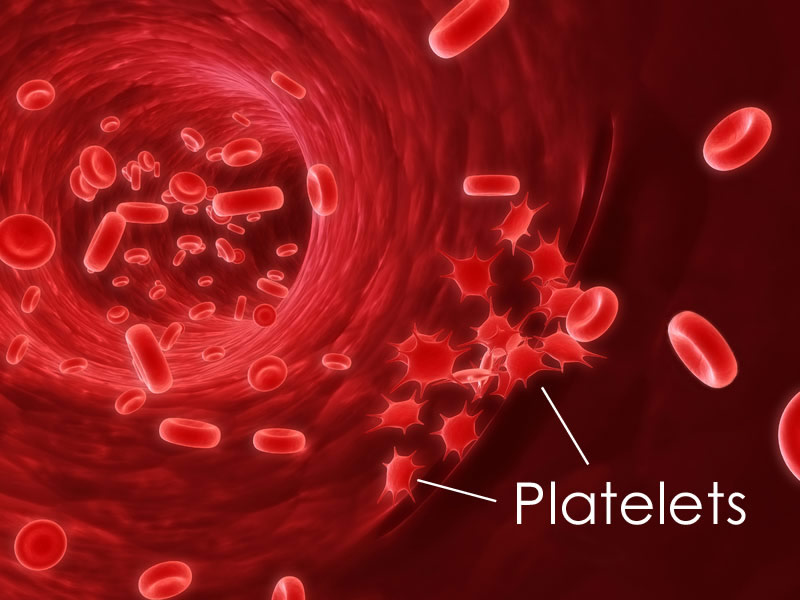Coagulation cascade - blood process

What is Coagulation Cascade and Definition
Coagulation - the process, also called the coagulation cascade, through which the BLOOD forms clots. The cells responsible for forming clots are platelets, which interact with each other, collagen, proteins, and other substances in the blood. Specialized proteins in the blood, called CLOTTING FACTORS, activate in cascades, with one activation leading to another in sequence. Coagulation begins with one of two sequences of cascading events: either an extrinsic or an intrinsic trigger sets off a different cascade. Each cascade culminates in clot formation. Current research suggests that coagulation cascades unfold at different paces and with differing thresholds of activation according to the type of tissue or the organ structure involved. This way, the body manages the coagulation process appropriately to the situation.
Coagulation is a beneficial event when it stops bleeding and can become a hazard to health when it occurs inside blood vessels. Insufficient clotting allows extended bleeding, and excessive clotting can result in HEART ATTACK, STROKE, PULMONARY EMBOLISM, and DEEP VEIN THROMBOSIS (DVT). Though the coagulation process includes several inherent checks and balances that ordinarily strike a balance between beneficial and harmful clotting, problems with coagulation can occur and can be life-threatening.
Coagulation disorders occur when certain clotting factors are missing (such as in HEMOPHILIA), which results in excessive bleeding, or when there is an abundance of platelets in the blood (such as in THROMBOCYTHEMIA), resulting in excessive clotting. LIVER disease such as CIRRHOSIS or severe HEPATITIS affects the liver’s ability to produce clotting factors-especially factors II, VII, and X-and to metabolize VITAMIN K (which participates in converting a number of clotting factors from inactive to active states), impairing coagulation.
Extrinsic coagulation cascade
Any breach in a blood vessel, such as a cut (even microscopic), causes blood to come into contact with tissue factor (clotting factor III), a protein on the surface of epithelial cells (the cells of the SKIN, mucous membranes, and lining of the blood vessels). Tissue factor initiates the extrinsic coagulation cascade, activating the release and interactions of thromboplastin, clotting factor VII, and calcium ions to culminate in the production of clotting factor X.
Intrinsic coagulation cascade
Internal clot formation occurs without a breach when the blood comes into contact with a foreign substance in the blood such as an ATHEROSCLEROTIC PLAQUE that activates the body’s INFLAMMATION response, resulting in the formation of collagen. Collagen’s presence initiates the release of kallikrein and high molecular weight kininogen (HMWK), two substances that activate clotting factor XII. The continued interaction among these substances draws clotting factor XI and clotting factor IX into the process, culminating in the production of clotting factor X.
Clot formation
PLATELET AGGREGATION and clot formation begin at the intermediate level of either cascade, when clotting factor X initiates the conversion of clotting factor II (prothrombin) into the enzyme thrombin. Thrombin in turn converts clotting factor I (fibrinogen) to fibrin, a protein that interlaces with collagen (formed by the IMMUNE SYSTEM’s inflammation response) to form a clot. The clot attracts additional platelets, extending the coagulation process until the protein thrombomodulin activates protein C, beginning the coagulation inhibition cascade that brings coagulation to a halt.
See also ANTICOAGULATION THERAPY; ASPIRIN THERAPY; CORONARY ARTERY DISEASE (CAD); C-REACTIVE PROTEIN; HEALING; MEDICATIONS TO TREAT CARDIOVASCULAR DISEASE; SCAR.
Open discussion on the topic Coagulation cascade - blood process
Similar interests
- Nuovi Casino
- Casinos Not On Gamstop
- UK Casinos Not On Gamstop
- Casinos Not On Gamstop
- UK Casinos Not On Gamstop
- Casino Non Aams Italia
- Slot Sites Not On Gamstop
- Meilleur Casino En Ligne
- Non Gamstop Casino Sites UK
- Meilleur Casino En Ligne
- Casino En Ligne France
- Best Non Gamstop Casinos
- Casinos Not On Gamstop
- UK Casino Not On Gamstop
- Casinos Not Signed Up To Gamstop
- Best Slot Sites UK
- Non Gamstop Casino Sites UK
- Online Casinos Nederland
- Online Casinos Nederland
- Casinos Not On Gamstop
- Best New Uk Casinos Not On Gamstop
- Casino Non Aams
- Non Gamstop Casinos UK